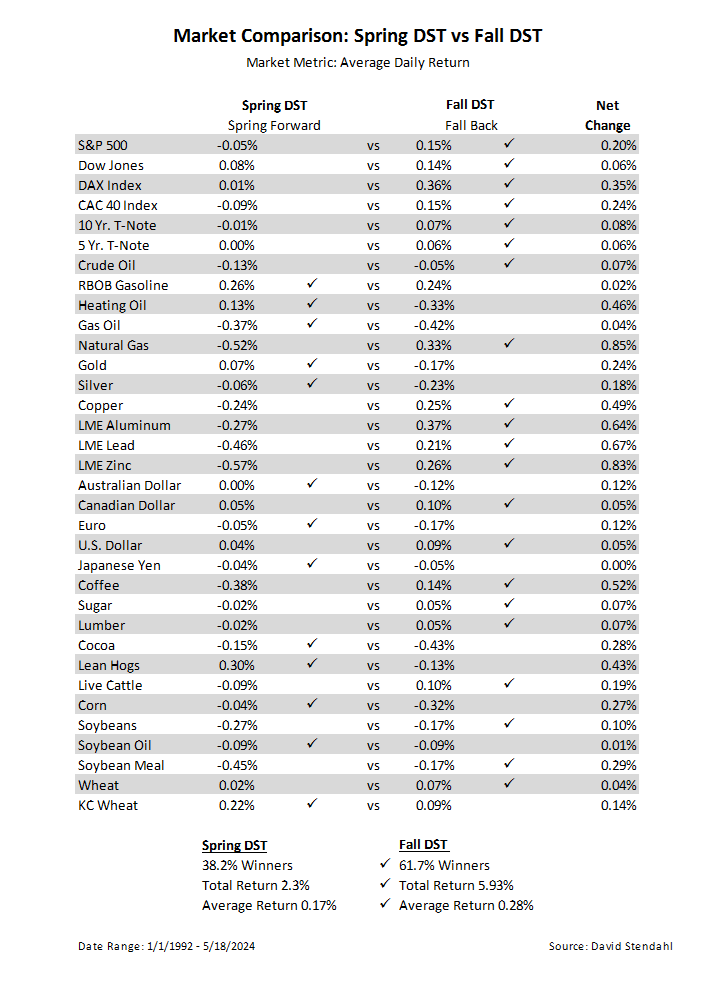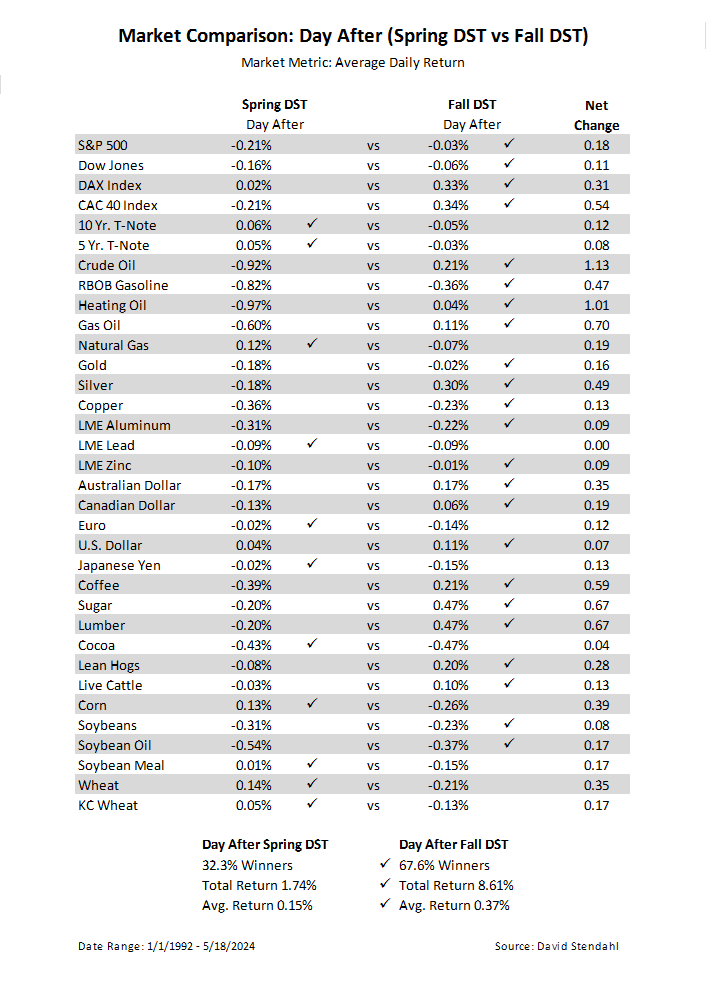Market Comparison Breakdown: DST Spring vs DST Fall
Daylight Saving Time in the United States begins each year on the second Sunday in March, when clocks are set forward by one hour, thereby losing an hour. Clocks are turned back again to standard time on the first Sunday in November as DST ends and we gain an hour. DST is often referred to as “Spring Forward, Fall Backward” because of when these time changes occur.
The question is … How are the markets influenced by Daylight Saving Time when compared between Spring and Fall?


Calendar Breakdown by Events
All trading involves risk. Leveraged trading has large potential rewards, but also large potential risk. You must be aware of the risks and be willing to accept them in order to invest in the futures and options markets. Don’t trade with money you can’t afford to lose. This is neither a solicitation nor an offer to Buy/Sell futures or options. No representation is being made that any account will or is likely to achieve profits or losses similar to those discussed. The past performance of any trading system or methodology is not necessarily indicative of future results.
Our strategies have not been developed based on knowledge of or with reference to your particular circumstances, such as financial position, goals, risk-reward preferences, tax situation, brokerage arrangement, investment or trading experience, and so forth. Hence no content or model published here constitutes a recommendation that any particular security, portfolio of securities, transaction, or investment strategy is suitable for any specific person. You alone are solely responsible for determining whether any investment, security or strategy, or any other product or service, is appropriate or suitable for you based on your investment objectives and personal financial situation. More
